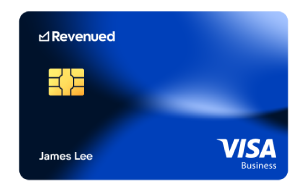Dissecting the Cash Flow Statement (Example Included)
Dissecting the Cash Flow Statement (Example Included)
For any kind of business, cash flow needs to be a key part of your operation. Having sufficient funds moving in and out of your business is a testament to your business’ liquidity and reveals a ton about its long-term stability. In fact, cash flow is typically a major concern for any prospective lenders who might wish to invest in your business.
Given its importance, identifying and preserving a steady cash flow should already be a priority. If it’s not, there’s no better time to start tracking it as one of your most significant metrics — and the best way to do that is to start with a cash flow statement.
Alongside your balance sheet and income statement, your cash flow statement is one-third of your business’ financial statement, and it essentially acts as the connective tissue. By informing you of your business’ cash flow during a specific period of time, your cash flow statement bridges the gap between the balance sheet and income statement. But what is a cash flow statement’s greater purpose, and why is it truly necessary? Let’s get into those answers so you can better utilize how critical this document is in shaping your business.
What Is a Cash Flow Statement?
As its name implies, your cash flow statement provides a summary of how much actual or anticipated cash is moving in and out of your business over a time period (like a month, quarter or even a year). Younger businesses and those less experienced with managing cash flow are typically encouraged to create monthly cash flow statements to keep a close watch on their totals, which can radically change early on.
Primarily, this document aims to keep you updated on where funds are coming from and where they may be headed. This can help if you need to take swift action to redirect your funds or shift your business decisions accordingly. For example, you may wish to adjust your budget upon learning of your latest cash flow totals, or look to make your business more attractive to potential investors based on what your cash flow statement reveals about your company’s financial standing.
Cash flow on the operating side of your business is particularly interesting to lenders and investors — it shows your ability to cover your outstanding debts and distribute dividends. In this respect (and many others), your cash flow statement presents perhaps the most accurate assessment of your business’ financial health.
If you’re looking for a way to reconcile your net income and cash flow, look no further than your cash flow statement. The details contained there give you a thorough snapshot of your finances, including asset purchases, sales and operational expenses. As a business owner, it’s your responsibility to keep a keen eye on your company, and the cash flow statement should be one of the go-to resources that you and your team use to clarify your next move.
Recommended Article: How to analyze business cash flow.
Anatomy of a Cash Flow Statement
In its mission to break down the inflow and outflow of cash within your business, the cash flow statement covers transactions related to three specific types of activities that collectively create a thorough picture of your overall financial health. With this data, you and your investors can be better informed and pinpoint trouble spots within your books. Naturally, the goal is traditionally a positive cash flow, in which your company generates more cash than it spends. These remaining funds can then be directed to dividends, expansion or growth plans. However, a business may also yield a negative cash flow for strategic reasons, such as a focus on fostering growth. This is precisely why cash flow statements are maintained over an extended period of time: to allow a long-term view of a business’s finances.
Let’s look a bit closer at each of the three types of financial activities included in your cash flow statement.
Operating Activities
The operating activities section of your cash flow statement tracks all financial earnings and expenses that result from the core operations of your business. Whatever your products and/or services entail, this is where you’ll be able to see the pure revenue generated by sales, as well as the cost of production and distribution you need to funnel into your products/services to provide them in the first place.
While revenue can vary wildly, your costs of production and distribution can be affected by a wide variety of factors, including:
- Depreciation
- Inventory and equipment costs
- Accounts receivable
- Accounts payable
Investing Activities
Any changes in cash flowing out from your business will appear in the investing activities section of your cash flow statement, as long as they can be traced to capital expenses designed to facilitate your business’ continuing or future success. That includes business purchases like property, equipment or vehicles, and it even extends to stocks and bonds.
This section also covers increases in cash inflow from the sale of assets or other investments. If it relates to investments of any kind, it will undoubtedly affect the totals here. For many business owners, this section is tremendously helpful in determining the ROI of its decisions over a certain period of time.
Financing Activities
Any attempts to raise capital for your business are recorded here in the financing activities section of your cash flow statement, no matter what effect they have on your bottom line. Examples of activities that would be covered here include stock issuances, dividend payments and the repurchase of bonds.
How to Build a Cash Flow Statement
Now that you have a clear idea of why you need a cash flow statement and what it should include, you’re probably wondering how you can create one for yourself. Well, you’ve come to the right place! To start, you should create a cash flow statement for each month of your business, which will allow you to track these figures over an extended period of time. Here are some steps to help you get started.
Establish Your Starting Balance
To have any concrete idea of the impact your business activities are making, you’ll need to know precisely where you’re coming from. So before you do anything, nail down just how much cash will be in your business bank account when your first month begins.
Determine an Estimate of Cash Inflow
Even if you don’t have the actual totals yet, you’ll still find tremendous value in estimating the expected amount of cash your business will take in throughout the month. Of course this includes sales revenues, but don’t forget to include outstanding collections you anticipate receiving payment on, as well as transfers of personal funds and any loans you’ll be receiving. If it’s money going into your business checking account, count it here.
Determine an Estimate of Cash Outflow
This is, naturally, the opposite of the above: a full record of all money leaving your business account in the month ahead. Any expenses should be listed, including inventory, wages, accounting and advertising. Be sure not to leave anything out: don’t forget fixed totals like rent, utilities, insurance payments, taxes or loan payments. Often it’s much easier to estimate how much money you’ll be spending to your keep business up and running, so don’t sacrifice this opportunity to maximize the accuracy of your cash flow statement.
Do the Math
Once you have estimates for your cash inflows and outflows, factor them into your starting monthly income. When all is said and done, you should have a fair assessment of how much money will be remaining in your account to serve as the starting balance for the next month.
Cash Inflow:
- Sales Paid
- Collections of Credit Sales
- Loans and Transfers
= Total Cash Inflow
Cash Outflow:
- Inventory
- Rent
- Wages
- Utilities
- Phone
- Insurance
- Advertising
- Accounting
- Miscellaneous
- Loan Payments
- Taxes
= Total Cash Outflow
Total Cash Inflow – Total Cash Outflow = Ending Balance
IN THIS ARTICLE
RELATED ARTICLES
Revenued Business Flex Line vs Ecommerce Revenue Based Financing
Learn MoreRevenued Flex Line Pricing vs. (MCA): A Comparative Analysis
Learn MoreWhat is My Business’ Credit Utilization Ratio?
Learn MoreWhy is Cash Flow Important to Your Business?
Learn More
Boost your spending power with the Revenued Business Card
Only pay for what you use at gas stations, hotels, supply stores, supermarkets and more.
Take control with the Flex Line
Check your available balance online and request a cash draw with the tap of your finger, anytime.

